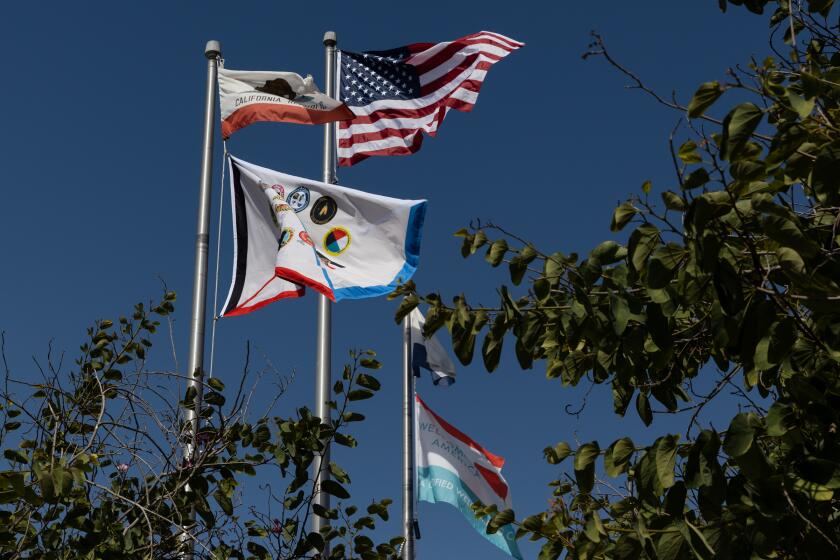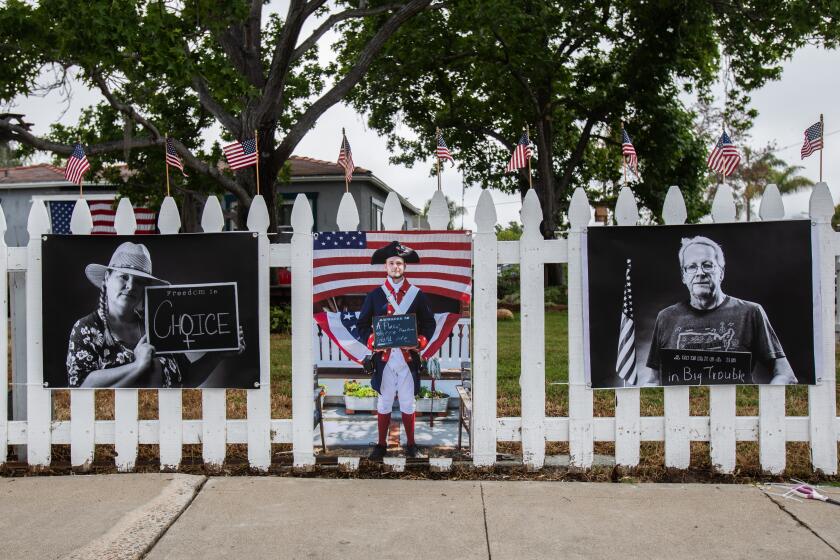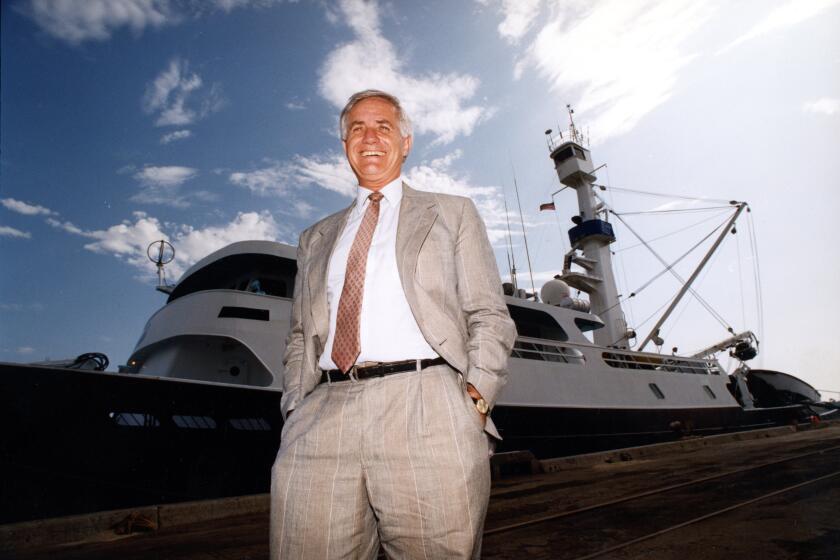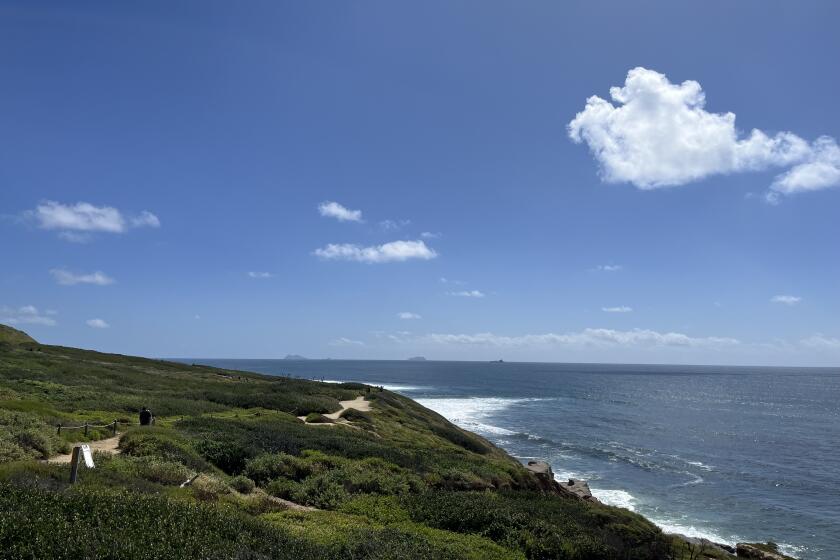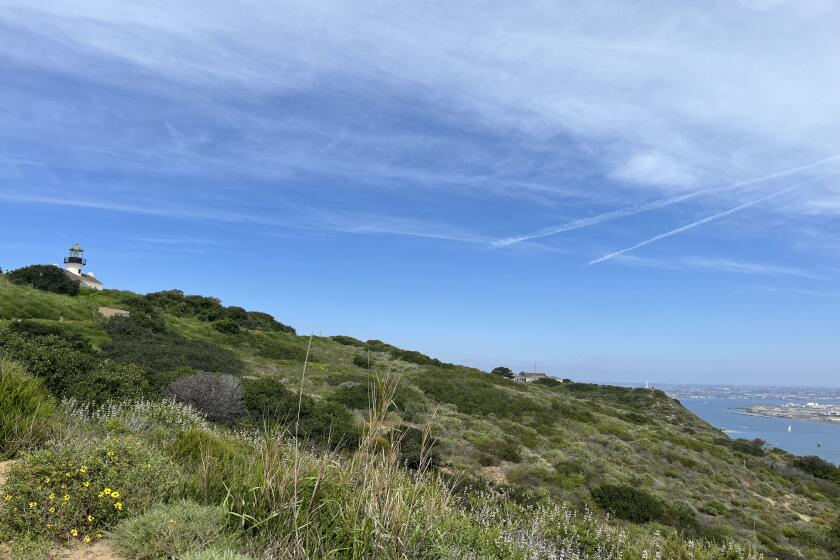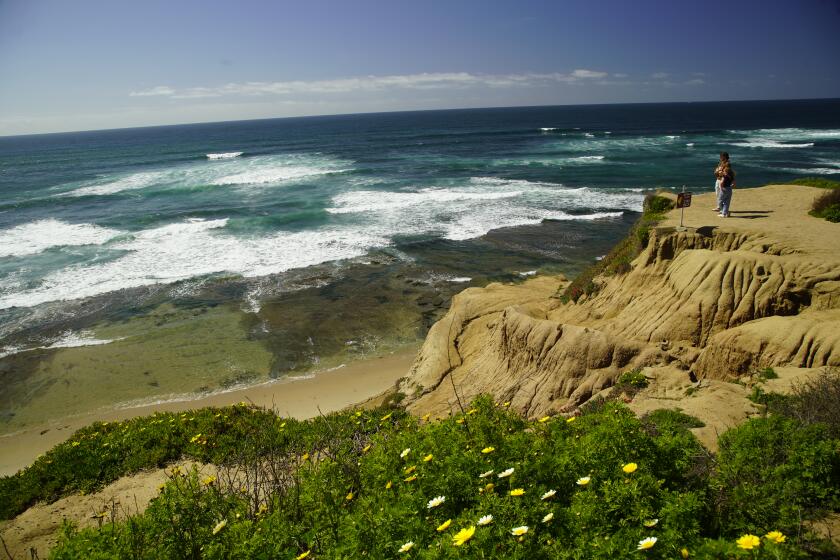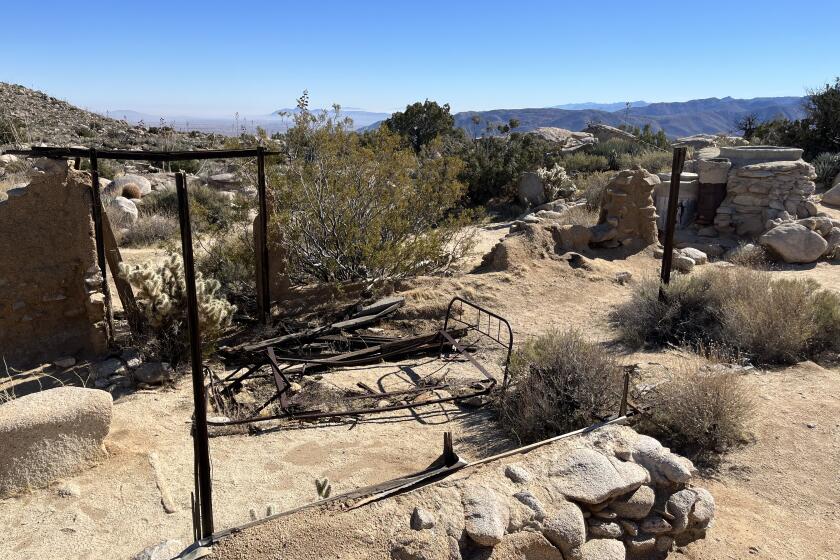A new spin on an old sport: Disc golf soars during the pandemic

A tournament in Oceanside this weekend features top pros
The coronavirus clipped the wings of a great many things. Not disc golf, which has been soaring.
Courses in San Diego County, from venerable Morley Field (one of the nation’s oldest) to newly renovated Mast Park in Santee, are busy even on weekdays. Disc manufacturers struggle to keep up with the demand for their farthest-flying plastic. Tournaments featuring top players, while still nowhere near as lucrative as conventional golf and other established sports, are attracting more spectators and bigger cash prizes.
One of the tournaments is being held in Oceanside this weekend. The Challenge at Goat Hill Park, part of the Disc Golf Pro Tour, has men’s and women’s fields that include players who have won national and world championships. Almost 200 golfers from as far away as New Jersey, Florida and Toronto are competing from Friday through Sunday.
“It’s clearly the largest disc golf tournament ever held in San Diego County,” said Allen Risley, the tournament director. A limited number of spectators will be allowed through paid admissions.
The popularity of the sport has been building for years, but it accelerated during the pandemic. People found themselves with time on their hands and fewer places to spend it. Health guidelines encouraged outdoor, socially distanced activities, and disc golf checks both boxes.
It’s also relatively inexpensive. The discs run in the neighborhood of $12 each, and many of the courses are free to play.
“This sounds bad when you say it, but COVID-19 may be the best thing that ever happened to disc golf,” said Clint Calvin, a 26-year-old San Diegan who won the U.S. amateur championship in 2018 and is now a touring pro. “Our community is growing, and it’s really cool to see new people come in who are passionate about it.”
UDisc, a cellphone app that allows players to find courses and keep score, registered its busiest month ever last August, well into the pandemic. At that point, a new round was being started somewhere in the world every 1.6 seconds.
The number of active members in the Professional Disc Golf Association (open to duffers and elite players alike) went from 53,366 in 2019 to 71,016 in 2020. It’s an overwhelmingly male group — about 93 percent. (Regular golf has about 24 percent female participation.)
The number of courses they play on jumped, too, from 8,463 worldwide in 2019 to 9,342 in 2020.
“It’s a great way to get exercise and to meet different people from all walks of life,” said Dean Velasco, 45, an information technology engineer who plays four times a week, usually at Mast Park. “It doesn’t matter what your religion is when you’re throwing discs, or what your politics are. It’s just fun to be out there.”
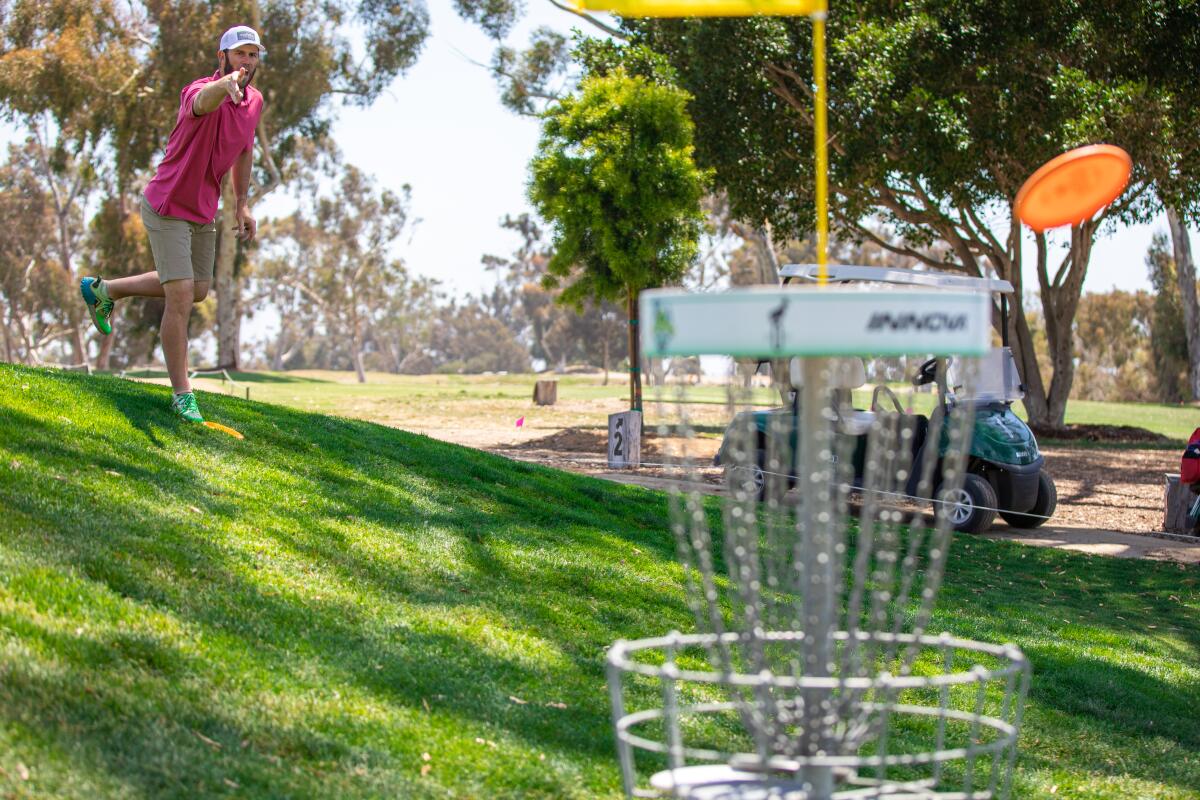
Bags full of discs
The sport resembles conventional golf in many ways. Instead of knocking a ball into a hole, a disc is thrown into an elevated metal chain basket. Lowest score wins.
Players tee off at each hole, then take subsequent shots from where the disc lands. They putt. They carry bags filled with a dozen or more discs, different in thickness, weight and aerodynamics. Some are used for straight throws down fairways. Others are thrown on arcs around trees and other obstacles. Some are rolled on the ground under low-hanging branches.
Nobody knows for sure when disc golf was invented. People have been playfully flinging pie tins and other similarly shaped objects for centuries. Somebody somewhere probably made it a game to see who could hit a tree in the backyard in the fewest number of throws.
As an organized sport, it dates to the mid-1970s. The first official course was built in 1975 in Pasadena’s Oak Grove Park, which set a precedent: The lion’s share of those erected since are in public parks, like Escondido’s Kit Carson or Vista’s Brengle Terrace. Others have gone in on college campuses (Cal State San Marcos) or alongside ball golf courses, such as at Goat Hill Park, site of this weekend’s tournament, or at Reidy Creek in Escondido.
Morley Field, in Balboa Park, started in 1978 under the guidance of Snapper Pierson, a professional player who has won numerous championships and is in the Disc Golf Hall of Fame. He still helps run the course, which is one of the busiest in the world, drawing more than 100,000 golfers every year. Its popularity means tee times are required now, a rarity on public courses.
“Just like regular golfers, disc golfers like to have variety on a course, so some of the baskets are out in the open and easier to reach, and some are tucked away and more difficult,” said Steve Lyons, the head golf professional at Reidy Creek, which added disc golf two years ago. Its holes range in distance from about 275 feet to more than 600.
As interest in the sport grows, so does the number of commercial and educational appendages. Several companies make discs in a dizzying array of colors, plastics, and flight characteristics. These aren’t your father’s Frisbees; they’re smaller and lighter. They sometimes have names meant to impress, if not intimidate: Destroyer, Thrasher, Stiletto, Undertaker. Some of the most popular discs sell out quickly and get re-sold on the secondary market for double or triple the original price.
YouTube is full of videos offering tips on how to correct “grip lock,” “rounding” and other flaws in the throwing motion. There are blogs, podcasts and Facebook pages devoted to the intricacies of the game.
Many of the devotees stumbled across the game by accident, as Calvin did when he met friends in Balboa Park one day and saw discs flying at Morley Field. “Guys are throwing plastic at metal things?” he remembered thinking. “I’m down with that.”
He played for fun at first, then noticed he was regularly beating the scores of more-experienced players. He joined the Ruckus Disc Golf Club, one of several players’ groups in the area, and grew more competitive.
Before too long he was asking another question: Do people do this and make money?
Going pro
There are about 40 players who are considered “touring pros,” elite competitors for whom the game is their full-time job. Many of them will be in Oceanside this weekend for the 54-hole Challenge at Goat Hill Park.
The men’s field includes Calvin and some of the best-known names in the sport: Ricky Wysocki, Garrett Gurthie, Drew Gibson and Philo Brathwaite. The women’s field includes San Diegan Juliana Korver, a five-time world champion, Jennifer Allen, Jessica Weese and Lisa Fajkus.
What pro players make isn’t Fernando Tatis Jr. money, but it can reach into six figures through sponsorships, endorsement deals for “signature model” discs, teaching clinics and tournament winnings.
The tour, curtailed recently because of COVID-19, typically starts in February and runs into the fall. The tournaments are grouped geographically, with the players currently on their West Coast swing. After Oceanside, they’ll go north to Stockton and Portland before heading to the Midwest.
“Some of the players will put 20,000 miles on their cars this year,” said Risley, the Goat Hill tournament director He likens it to the barnstorming era of ball golf, when competitors slept on couches as they went from city to city and washed their clothes in laundromats. His son, A.J., is a touring pro.
One of the favorites this weekend is Thomas Gilbert, 21, of Toronto, who won the tournament in 2019 and finished second last year. Goat Hill, one of the longest courses in the world, favors players who can throw far. Gilbert crushed one drive 740 feet at Goat Hill a year ago.
“It’s exciting to see all the new people who have started playing and are getting a chance to find out what disc golf is all about,” he said. “The past year has been really good for the sport.”
Get Essential San Diego, weekday mornings
Get top headlines from the Union-Tribune in your inbox weekday mornings, including top news, local, sports, business, entertainment and opinion.
You may occasionally receive promotional content from the San Diego Union-Tribune.


